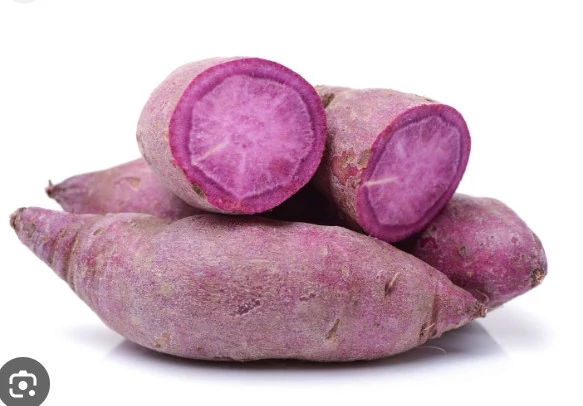In Anlo Tsiame, nestled in the heart of the Volta Region, a captivating culinary innovation has emerged.
The Pink gari is made from purple potatoes. This stunning fusion of traditional African cuisine and modern culinary creativity has been capturing the hearts and taste buds of locals and visitors alike.
This innovation was first discovered on Twitter, this delectable delight will not only add a splash of color to the local cuisine. But it will also contribute to the socio-economic development of the community.
The Origin of Pink Gari
Gari, a popular West African staple made from fermented cassava, has been a dietary mainstay for generations.
However, in the vibrant town of Anlo Tsiame, a twist has been introduced that has taken this everyday dish to new heights. The secret lies in the use of purple sweet potatoes, a colorful tuber rich in antioxidants and nutrients

Purple sweet potatoes
The innovation was made known to the public through @seyramofficials, a local collective committed to enticing the youth into agriculture by using his page to promote the sale of agricultural products.
The introduction of pink gari has not only been a gastronomic revelation but has also brought about positive changes in the local community. By utilizing locally available ingredients and traditional techniques, Anlo Tsiame has reinvigorated interest in traditional foods while opening new economic avenues.
Additionally, it is gaining attention from both locals and tourists, boosting tourism and promoting the region as a culinary destination.
Embracing Innovation while Preserving Tradition
The emergence of pink gari made from purple sweet potatoes in Anlo Tsiame stands as a testament to the dynamic nature of culinary evolution. This innovative twist on a classic dish showcases how traditions can be respectfully upheld while allowing room for creativity and experimentation.
Anlo Tsiame has demonstrated that by combining the past and the present, it is possible to create a culinary masterpiece that not only delights the senses but also sustains local communities and traditions.
The pink gari phenomenon is a living example of how food can be a powerful tool for cultural expression and economic progress.








